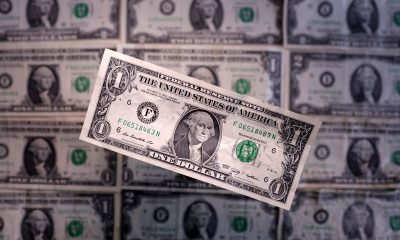Commodities
Crude oil set for first positive week in 5; OPEC + meeting in focus


© Reuters.
Investing.com — Oil prices traded in a mixed fashion Friday after the U.S. holiday during the previous season, with traders looking to next week’s OPEC+ meeting for more news about future production levels.
By 08:10 ET (13.10 GMT), the futures traded 0.9% lower at $76.43 a barrel, although there was no settlement on Thursday owing to the U.S. Thanksgiving holiday, while the contract climbed 0.1% to $81.48 a barrel.
OPEC+ meeting looms large
The crude benchmarks are on course for their first positive week in five, with both trading with weekly gains of around 1%, with the Organization of the Petroleum Exporting Countries and allies, including Russia, a group known as OPEC+, widely expected to agree to more supply cuts next week to boost prices.
However, the strong gains seen at the start of the week have been tempered by the news that the OPEC+ meeting was delayed to Nov. 30, having originally been scheduled for Sunday, as this prompted speculation of disagreements between member countries over the size of planned production cuts.
“Several members are reportedly unhappy about their production targets for next year, levels which were announced back in June,” said analysts at ING, in a note. “This is specifically the case for Angola, Congo and Nigeria, who had their production targets cut since they struggled to hit their 2023 targets. These members were unhappy back then, and it was agreed that their targets would be revisited before the end of this year and possibly revised higher. Clearly, this has not happened.”
However, these African countries are relatively junior members of the cartel, and the key to the market reaction will be if Saudi Arabia, the de facto leader of the group, agrees to extend its additional voluntary cut of one million barrels a day into early 2024.
U.S. stockpiles at highest level since July
Bigger gains for the week were also stymied by data showing a substantially bigger-than-expected increase in U.S. , with U.S. production remaining close to record highs.
U.S. crude oil inventories grew by 8.7 million barrels last week, leaving total U.S. commercial crude oil inventories at a little over 448 million barrels – the highest level since July.
This is the fourth straight week of builds for U.S. inventories, with the record level of U.S. supply posing a problem for OPEC+, as the U.S. appears to be taking market share away from the cartel’s top producers as they, and Saudi Arabia in particular, cut output to boost prices.
Weakening global economic outlook
A string of weak economic readings this week also pointed to weakening conditions in major global economies. Purchasing managers index data from Australia, the euro zone and Japan all showed business activity remained in contraction through November, amid pressure from high interest rates and inflation.
Focus is now on readings from top oil importer China, which are due next week. While the country’s oil imports have remained steady this year, a massive build-up in its inventories and stricter refining quotas have raised some concerns over a demand slowdown in the coming months.
(Ambar Warrick contributed to the article.)
Commodities
Oil prices rise; U.S. crude inventories plunge, Russia-Ukraine truce eyed
Commodities
India’s Reliance to stop buying Venezuelan oil over US tariffs, sources say
Commodities
Oil prices climb on Venezuela supply worries

 Forex3 years ago
Forex3 years agoForex Today: the dollar is gaining strength amid gloomy sentiment at the start of the Fed’s week

 Forex3 years ago
Forex3 years agoUnbiased review of Pocket Option broker

 Forex3 years ago
Forex3 years agoDollar to pound sterling exchange rate today: Pound plummeted to its lowest since 1985

 Forex3 years ago
Forex3 years agoHow is the Australian dollar doing today?

 Cryptocurrency3 years ago
Cryptocurrency3 years agoWhat happened in the crypto market – current events today

 World3 years ago
World3 years agoWhy are modern video games an art form?

 Commodities3 years ago
Commodities3 years agoCopper continues to fall in price on expectations of lower demand in China

 Economy3 years ago
Economy3 years agoCrude oil tankers double in price due to EU anti-Russian sanctions



























